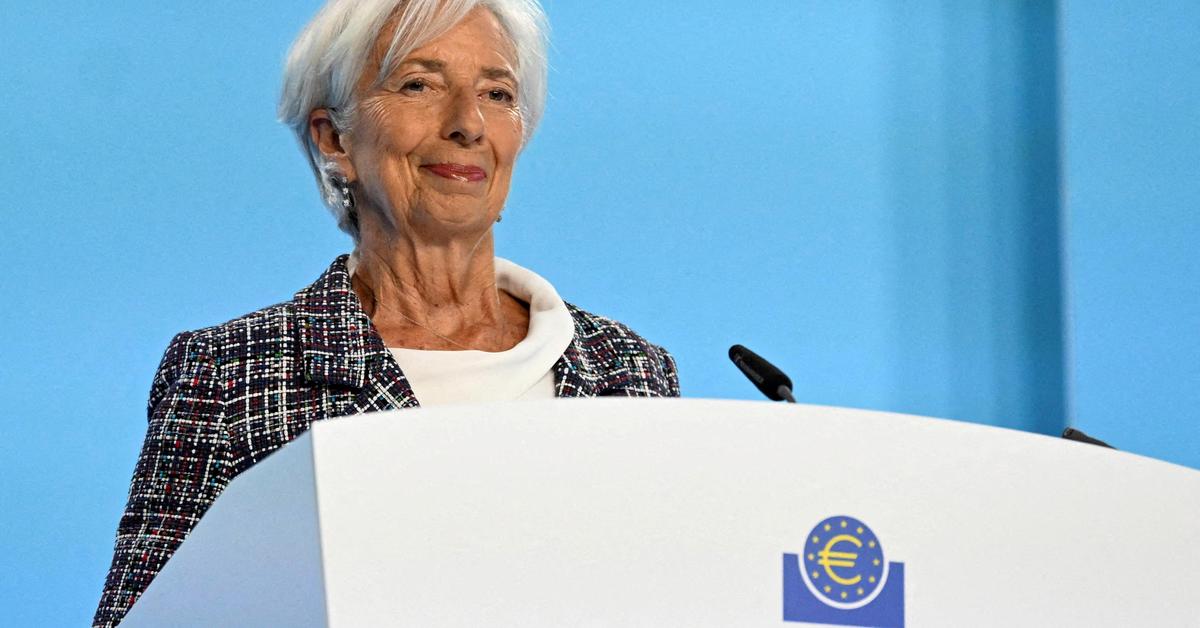The European Central Bank lowered its key interest rates on Thursday as expected. But when will the next interest rate hike come?
The European Central Bank already announced its monetary policy turnaround in June – after much criticism – completed. Now it has driven the stakes even lower on Thursday. And rightly so. Inflation in the eurozone fell to 2.2 percent in August, its lowest level in three years, and has thus come close to the ECB’s target of two percent. But the economy in the eurozone leaves much to be desired – the central bank could counteract this development with lower key interest rates.
At its meeting, it decided to reduce the key interest rate again. This affected all three key interest rates of the ECB, which it uses as an instrument for monetary policy control. “Today’s ECB decision to continue the interest rate cuts is correct and clearly justified by the current data. It is a positive and reassuring signal to the markets. Nevertheless, the ECB should continue to show tact. On the one hand, we continue to see high inflation rates in the services sector, so that the inflation rate could prove stubborn in the future. On the other hand, the ECB should not miss the right timing for further interest rate steps,” commented Jörg Asmussen from the German Insurance Association.
The Press/PW
But unlike before, it did not reduce all key interest rates to the same extent. For example, the rate for the so-called deposit facility will be reduced from 3.75 to 3.5 percent from September 18, i.e. by a quarter of a percentage point. The deposit rate indicates the amount of interest that banks receive if they park their money with the ECB until the next business day. The deposit rate has become increasingly important in recent times. The Euribor, which is important for savings and loan contracts, is much more closely aligned with the deposit rate than with the main refinancing rate.
Interest rate gap narrows
The latter was also reduced on Thursday, but even more than the deposit rate – by 60 basis points – from 4.25 percent to 3.65 percent. The ECB announced these changes back in March and has now implemented them as expected. The main refinancing rate, which was previously considered the key interest rate, gives banks the opportunity to borrow money from the ECB for a week. The ECB wants to stimulate these lending transactions again in the future. However, banks have made little use of this option recently because they already have sufficient liquidity, namely three trillion euros. By reducing the interest rate gap between the deposit rate and the main refinancing rate from 0.5 to 0.15 percentage points, it is hoped that this will create more incentives for banks to borrow money from the ECB. Whether this will succeed remains to be seen.
The deposit rate was negative for years, which meant that institutions paid “penalty interest” when they parked money with the ECB. However, this has now changed with the interest rate increases that became necessary in the wake of the wave of inflation.
The interest rate for the marginal lending facility was also adjusted, from 4.5 to 3.9 percent. This is the rate banks have to pay if they want to borrow money from the ECB overnight.
What happens next?
But the question remains as to what will happen to monetary policy until the end of the year. The ECB’s next interest rate meeting is in mid-October, and by then the US Federal Reserve will probably have already initiated its interest rate turnaround. It remains to be seen whether the eurozone will continue to fall or whether it will initially adopt a wait-and-see approach. According to Bundesbank chief Joachim Nagel, the ECB is “not operating on autopilot.”
The central bank has now confirmed its previous inflation forecast: it expects overall inflation of 2.5 percent for the eurozone this year, and consumer prices are only expected to rise by 2.2 percent next year. “Inflation is expected to rise again in the last part of the current year. This is partly due to the fact that previous sharp declines in energy prices will be eliminated from the annual rates,” the ECB said after its monetary policy meeting.


